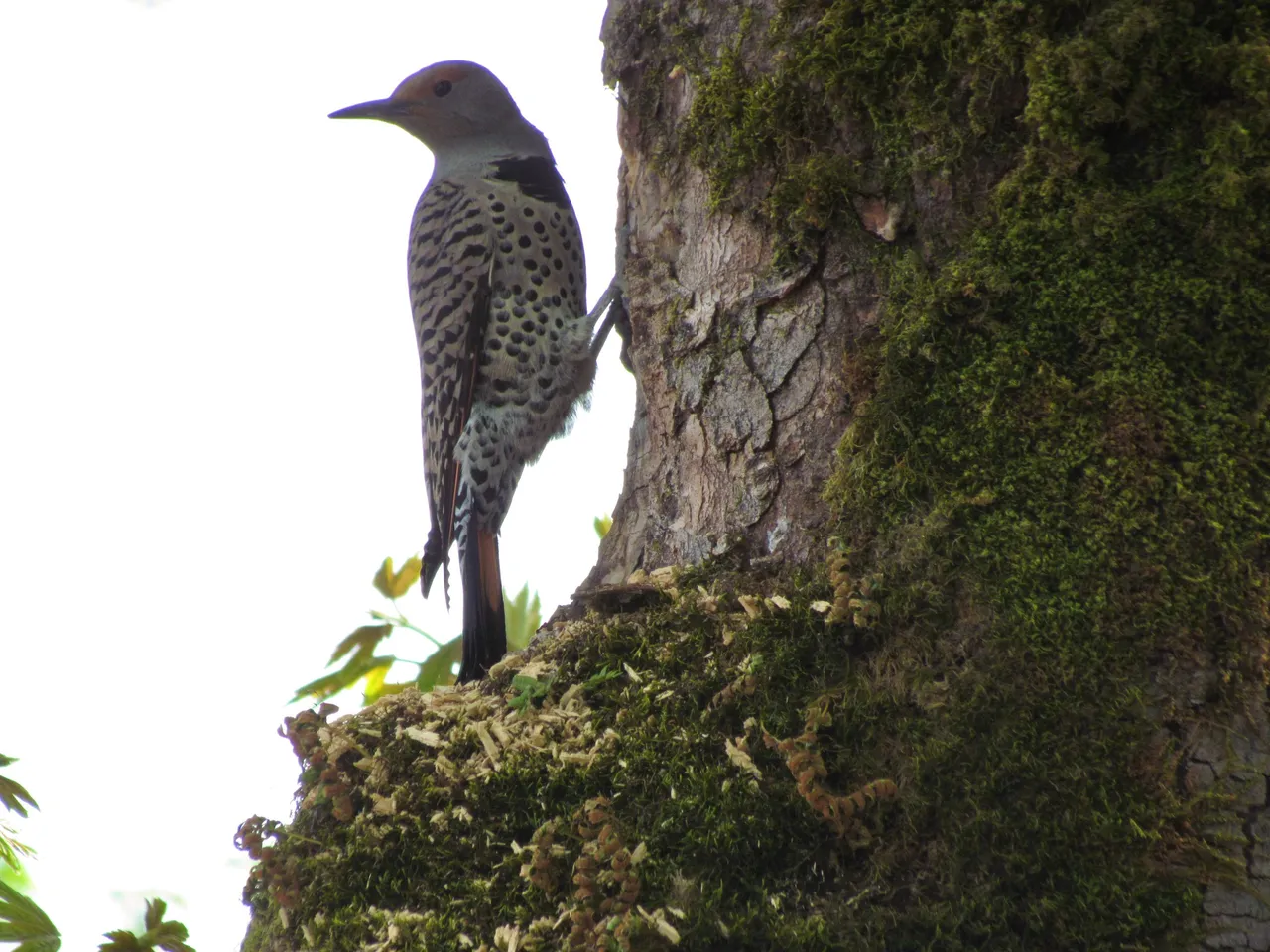
Most Northern Flickers are migratory, and they have recently returned to Portland to feed and nest. I've noticed them around in the last 8 years that I've lived here, but I've never had the opportunity to see their nesting behavior. Truth be told, I'd never given it much thought until I noticed all these wood chips underneath a maple tree one morning.

At first I thought someone had done some tree trimming and left a mess, but later in the afternoon when I went out I noticed pair of flickers on the tree. I took a video with my phone. (It's not exactly Planet Earth quality. But you get the idea.) The male is in the lower right. Unfortunately the color of this video is very drab and I wasn't able to capture the brilliant red of his mustache markings. I didn't have my real camera with me at the time.
But the next day, I did! And the female was there, working hard on excavating the nest.
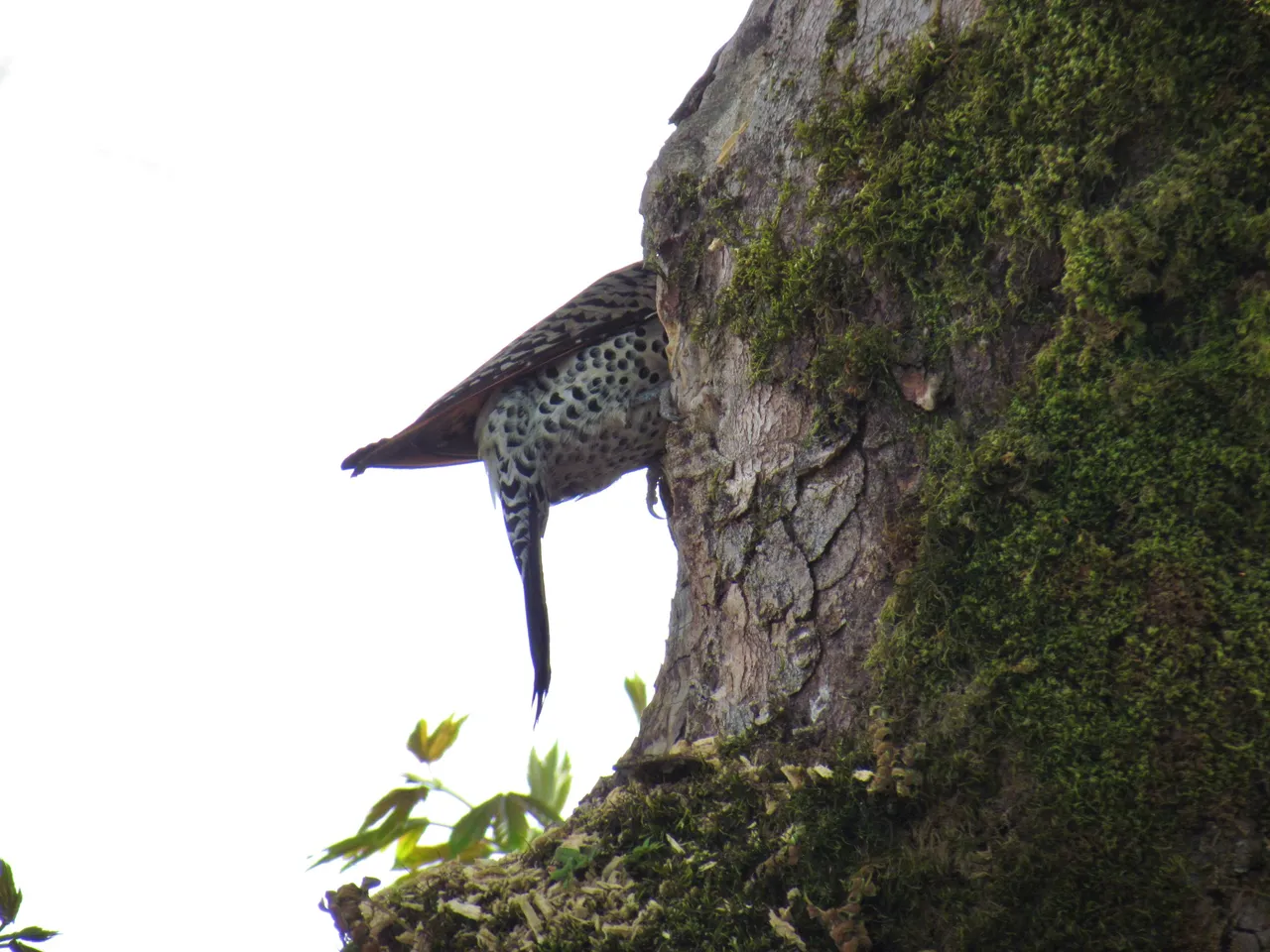
The backlighting was making it hard to get a good shot, so I walked to the other side of the tree, but when I turned around, she was gone.
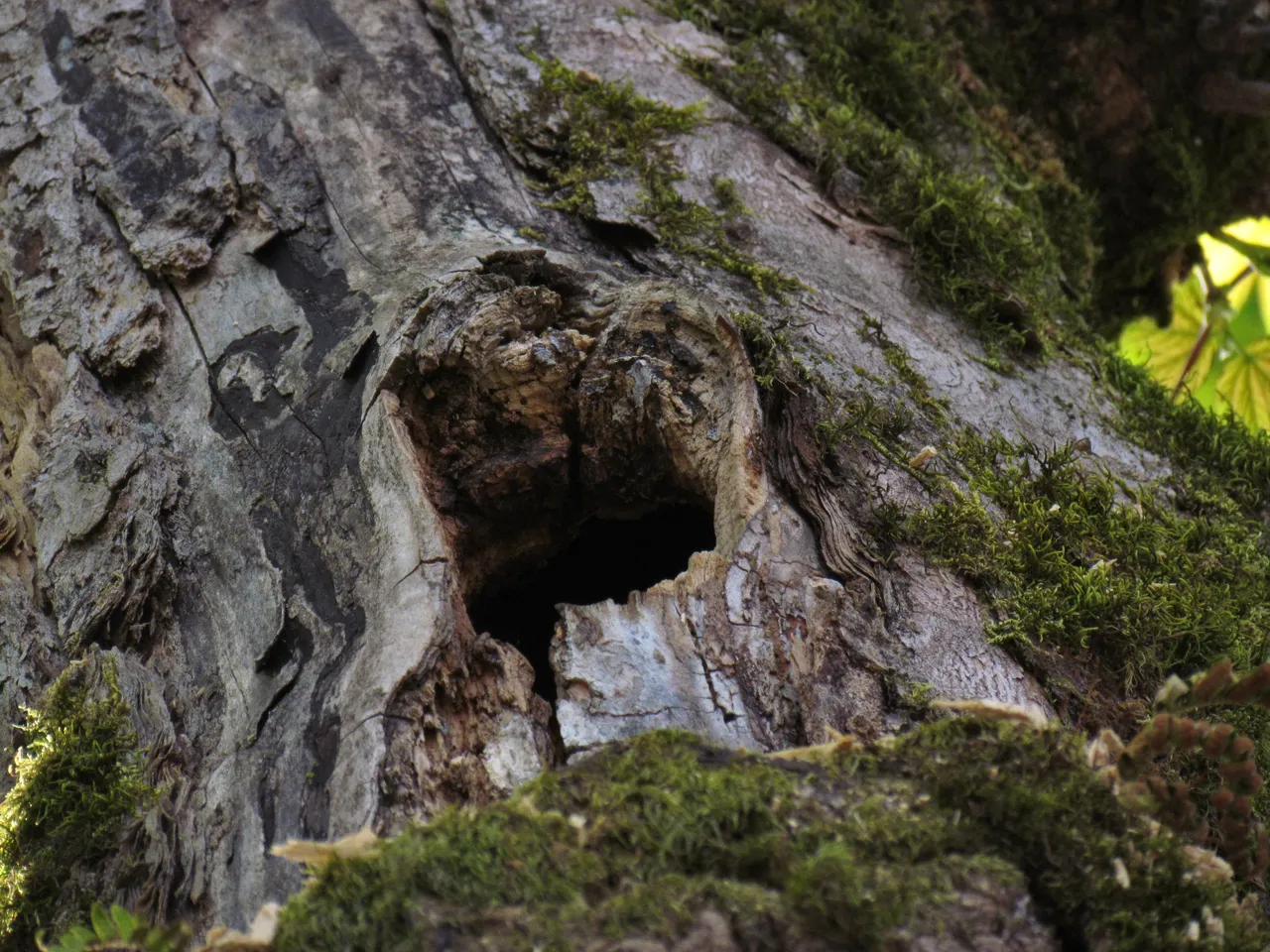
I thought maybe I had upset her by walking past, so I waited a minute for her to come back. As it turns out, she was too busy to care about me and had been there all along, cleaning out the inside of her nesting burrow.

She did give me the eye a couple times, wondering why I was watching her. And I'm pretty sure she tried to fling wood chips at me. I got some dust in my eyes, even though I was at least 15 feet away.

Watching her clean out the burrow made me recall all the times I've moved into a new place, all dusty and sweaty and tired and wondering when the grueling task of hauling boxes and furniture would ever end. I know I never looked this cute when I was doing it.
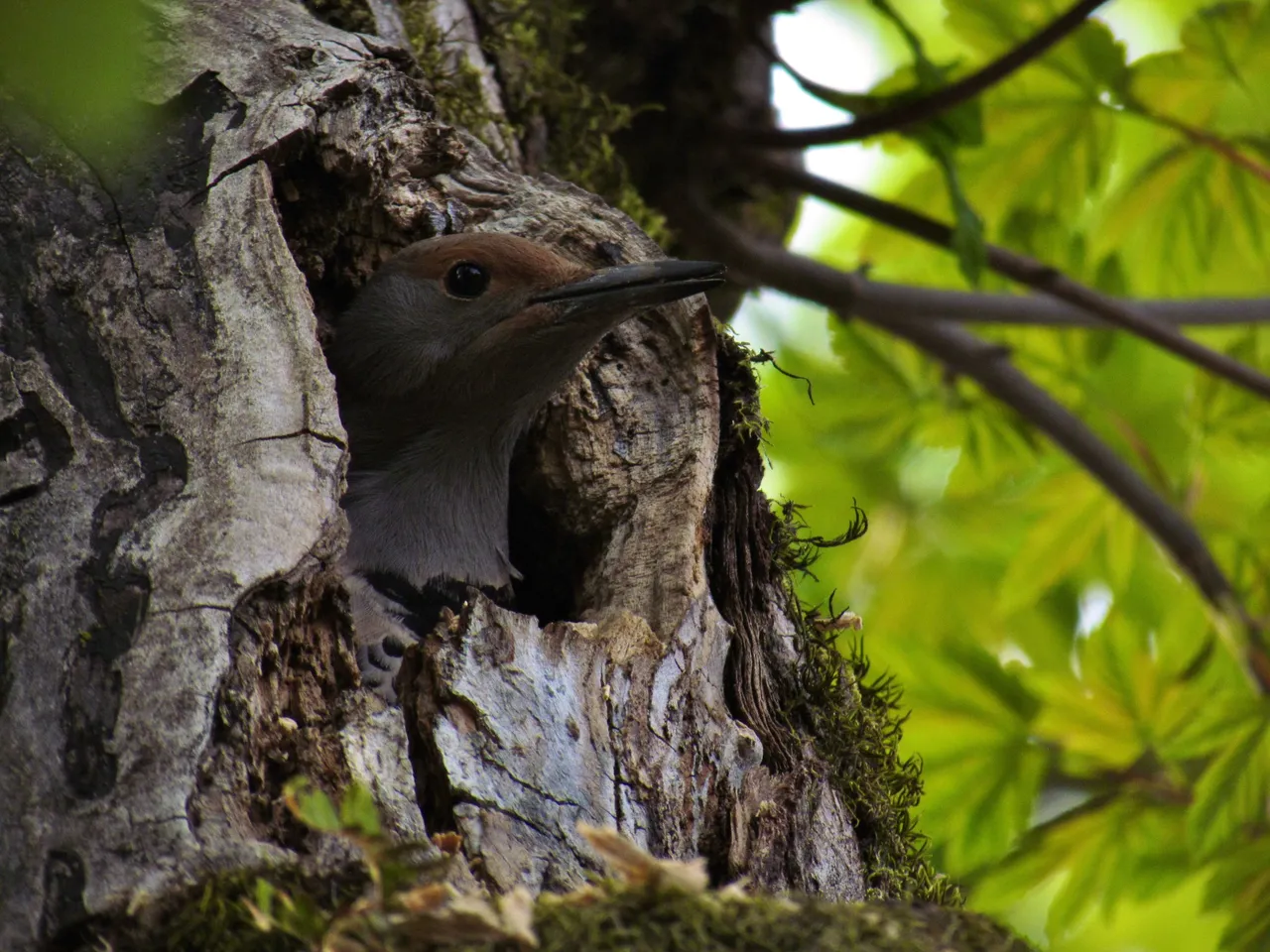
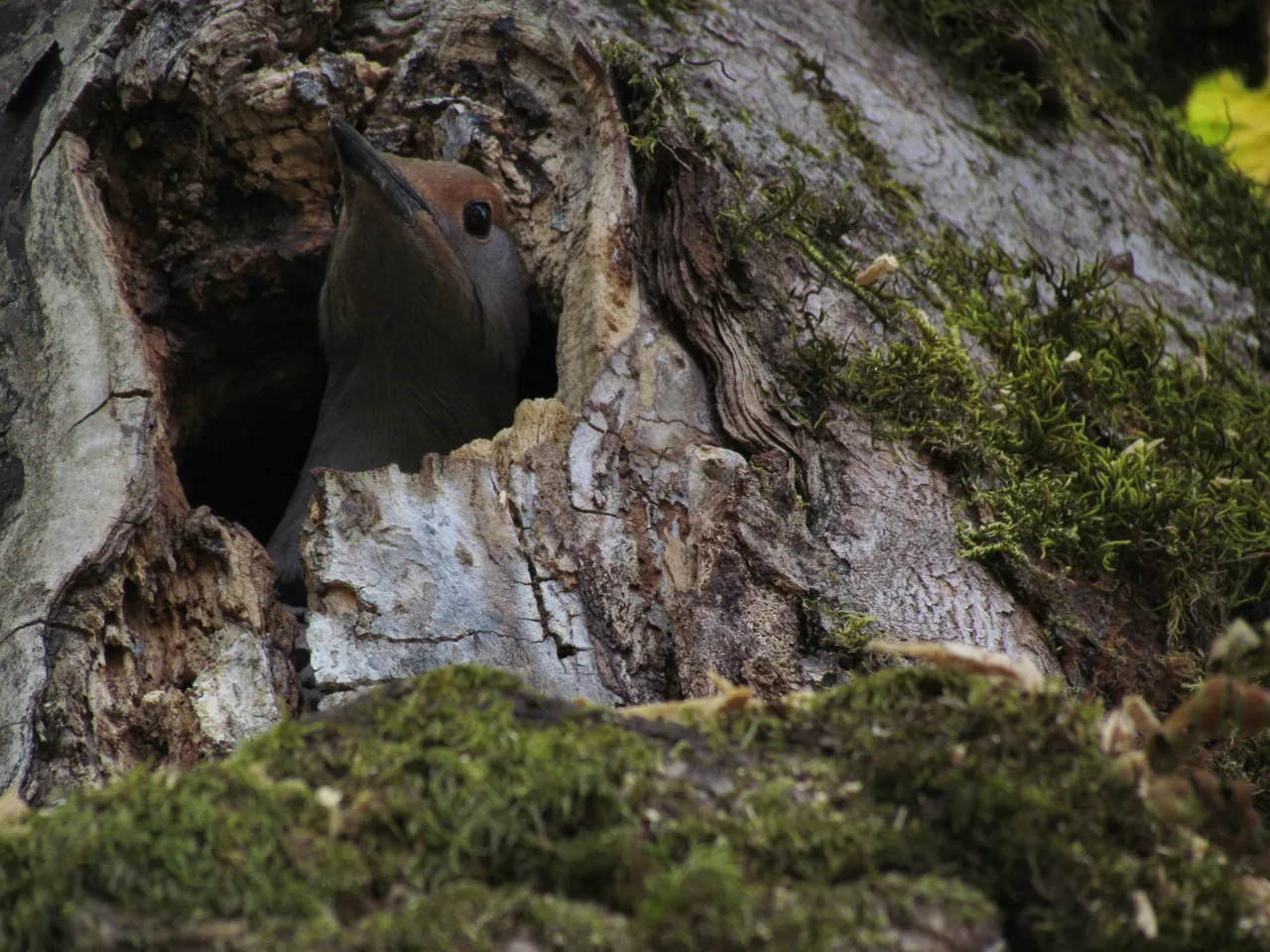
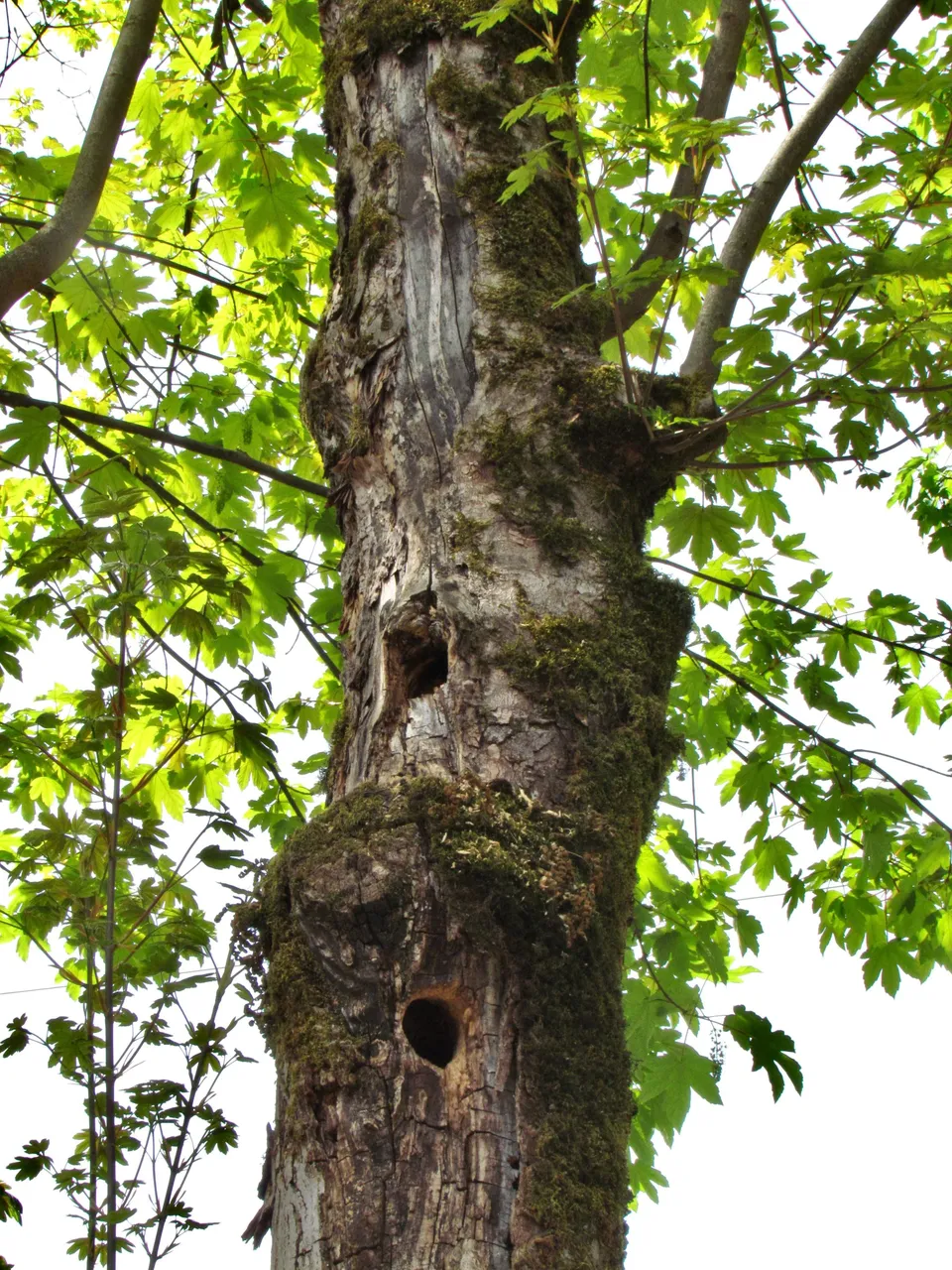
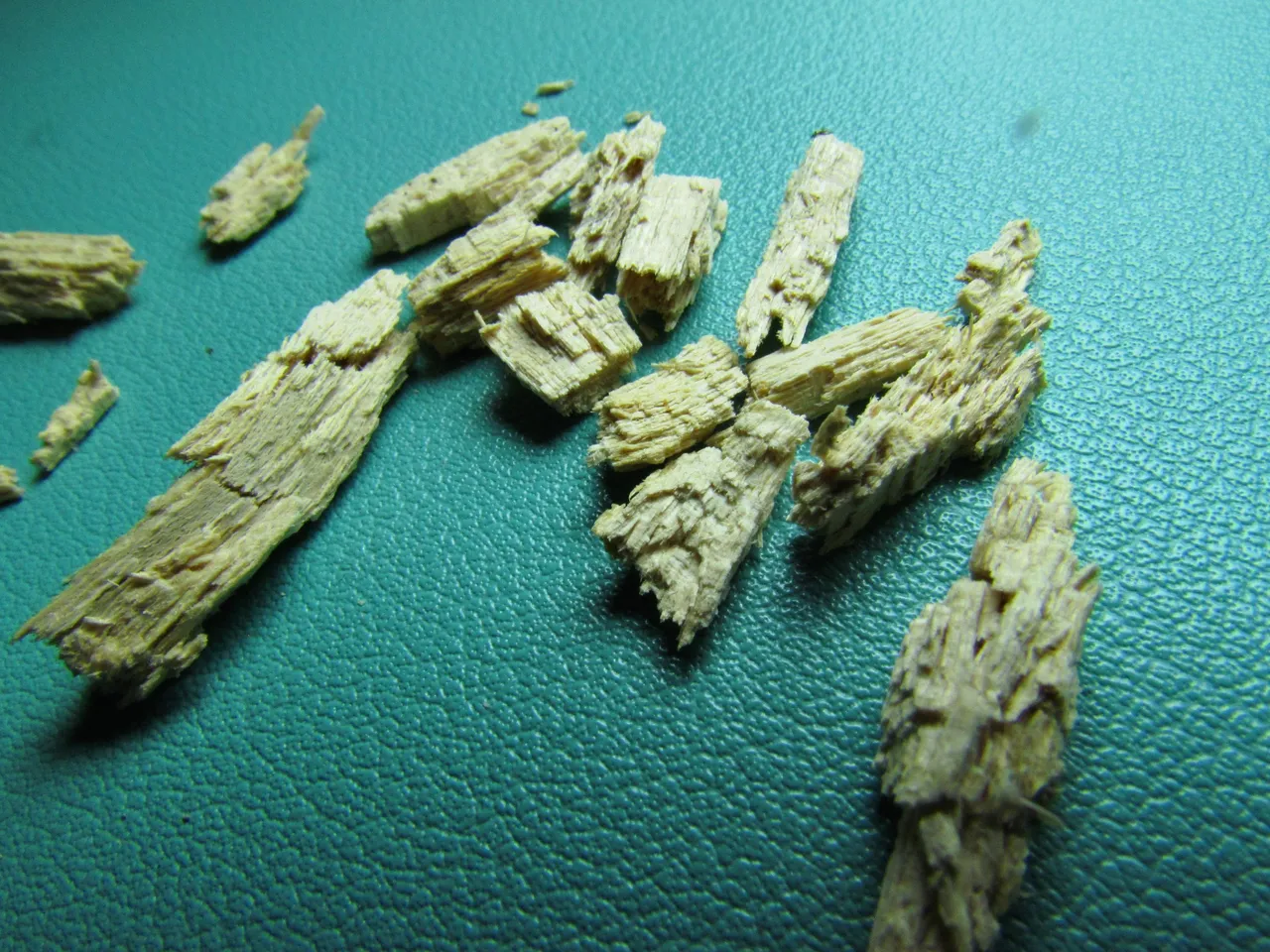
It amazes me that these small birds are so strong that they can drill into wood. In my research I learned that on occasion they will try to drill into the wood siding of houses to make a nest. They also drill out grubs and beetles in trees. I was surprised to learn that most of the flicker's diet comes in the form of worms and bugs they forage for on the ground, though, and that a lot of the drumming sounds they make on trees are actually territorial in nature.
Although my primary interest is in my neighborhood crow families, I do enjoy learning about the other birds and wildlife that live in my city. Being curious about them has turned a small neighborhood into a vast world. I am grateful for this gift.
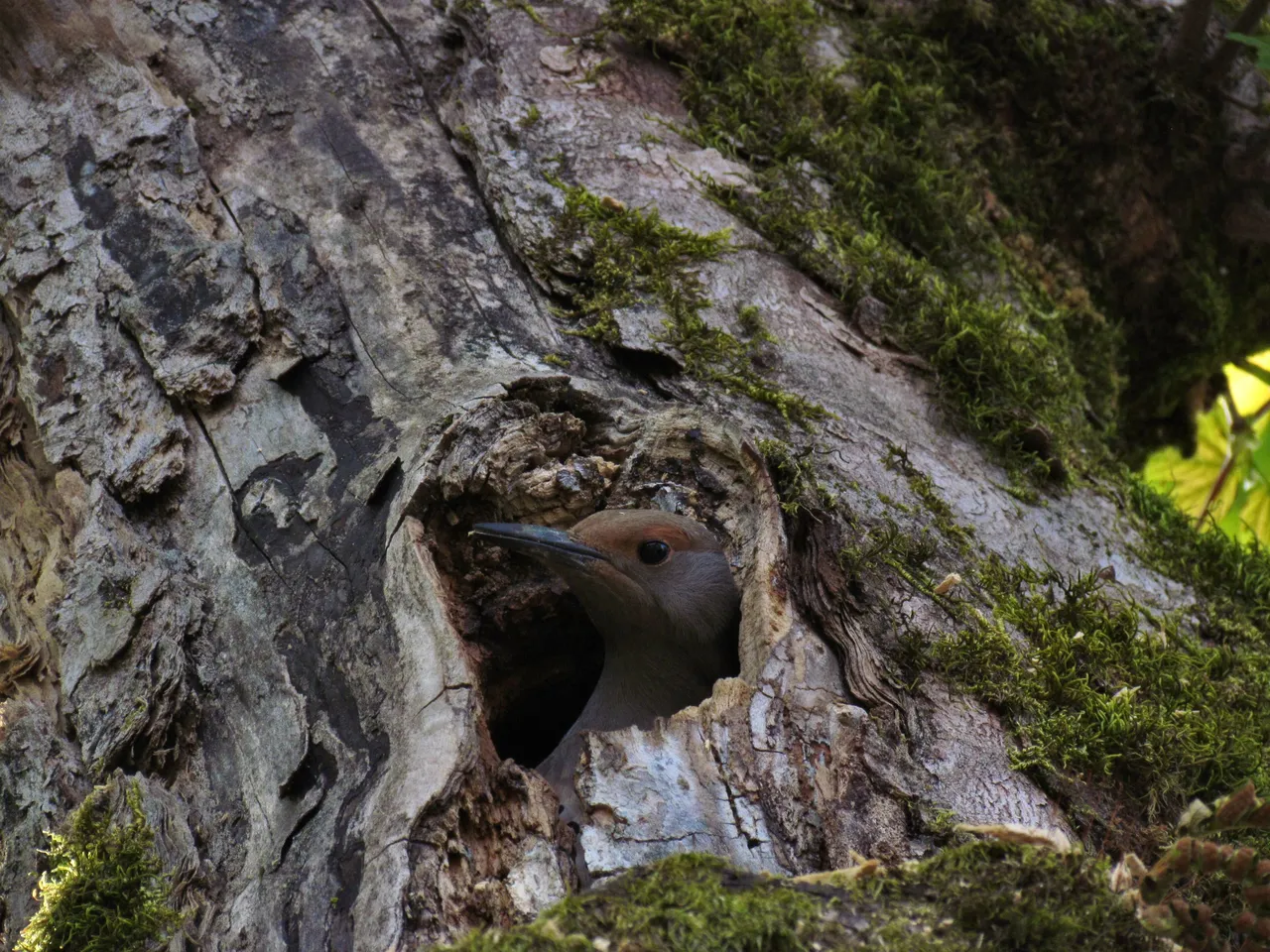

Thanks for reading!
